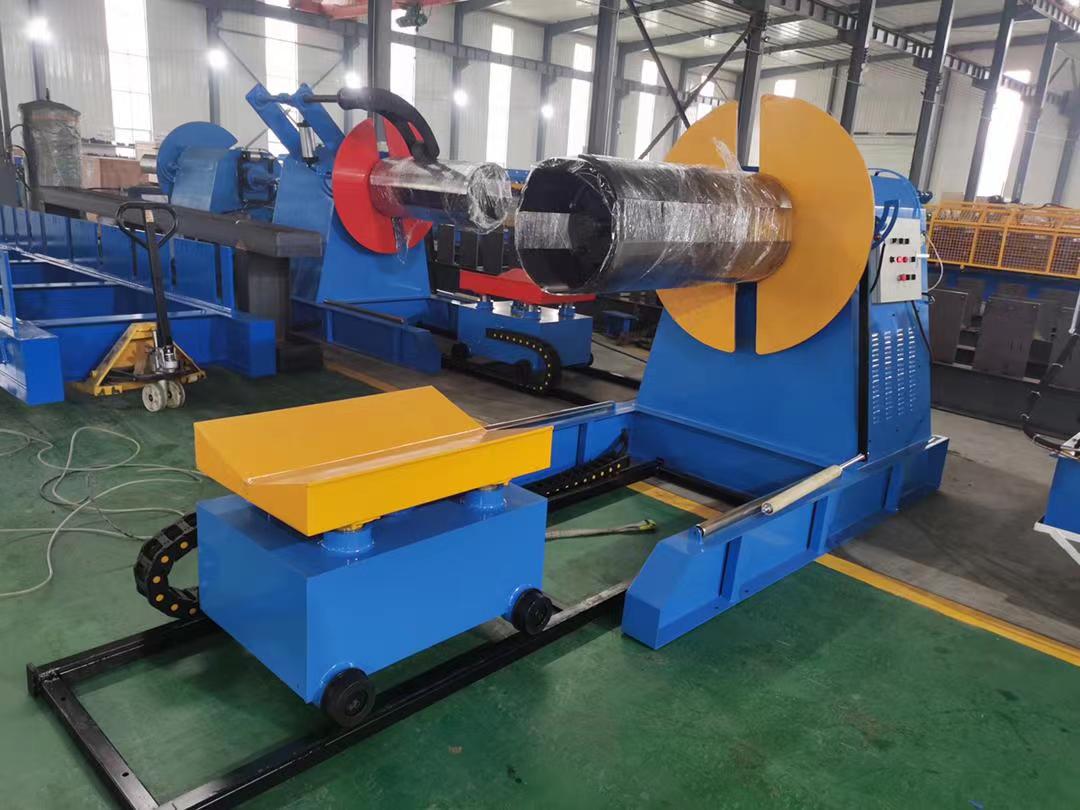If you’re in the business of metal sheet forming, you’ll likely be well-versed in the benefits of a hydraulic decoiler for roofing sheet roll forming machines. These versatile tools are critical to the smooth operation and efficiency of your manufacturing processes. However, understanding how to correctly operate and maintain your decoiler is essential to maximizing its lifespan and ensuring the highest quality of finished products.
Operation of Hydraulic Decoiler:
- Have a dedicated operator work with a forklift driver to align the steel coil material with the decoiler’s mandrel center.
- Once aligned, the forklift driver should slowly place the coil material on the carriage.
- The operator should adjust the height of the coil to align it with the decoiler’s mandrel center.
- The decoiler’s top end active bearing seat should be adjusted to stay on the same horizontal line as the decoiler.
- Adjust the tightening nut to ensure that the four arc plates grip the coil material, preventing deformation or damage.
- Manually rotate the decoiler to ensure free rotation of the material and check for potential problems.
Maintenance of Hydraulic Decoiler:
- Regularly lubricate all oil cups and manual lubrication points.
- Always adhere to the stipulated parameters for coiling, such as thickness, maximum width, and yield limit of the material.
- After connecting the power, test the normal and reverse directions of the lower roller and the lifting movement of the upper roller for any irregularities.
- Follow the machine’s coiling processing procedures and operation methods strictly, paying attention to safety while operating the machine.
- Make adjustments to the upper roller only after the main drive has stopped.
- If irregular noise or impact is observed during operation, stop the machine immediately for inspection.
- During operation, all personnel should cooperate and follow the command of the person in charge of coiling.
- Be cautious not to let your hands get trapped or rolled in with the steel plate during the coiling operation.
- Avoid any collisions between the crane and the machine while lifting steel plates or coils.
- After work, ensure the site is clean, equipment is well-maintained, and the power is turned off.
- Lubricate all sliding parts of the decoiler once a week.
In conclusion, correct operation and maintenance of your hydraulic decoiler will not only enhance its longevity but also ensure the quality of your roofing sheet roll forming processes. It’s all about the right techniques, regular maintenance, and an unwavering focus on safety procedures.
